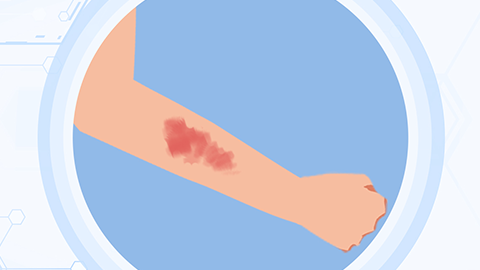What should be done if a burn becomes infected and pus forms?
Generally, the treatment methods for infected and pus-forming burn wounds mainly include wound cleaning, topical medication, systemic anti-infection therapy, wound protection measures, and surgical treatment. Specific details are as follows:

1. Wound Cleaning
After a burn becomes infected and produces pus, purulent secretions and necrotic tissue must first be removed to prevent worsening infection. The wound can be gently irrigated with normal saline to remove surface contaminants, followed by disinfection of the wound and surrounding skin using iodophor to reduce bacterial growth and create a clean environment conducive to healing. Procedures should be performed gently to avoid excessive friction that may damage newly formed tissue.
2. Topical Medication
Topical medications act directly on the wound to inhibit bacterial proliferation. Under medical guidance, patients may use ointments such as mupirocin ointment, silver sulfadiazine ointment, or compound polymyxin B ointment. These should be applied evenly over the wound to form a protective film that helps prevent infection while promoting tissue repair and relieving symptoms such as redness, swelling, and pain.
3. Systemic Anti-Infection Therapy
If the infection is extensive or accompanied by systemic symptoms such as fever and fatigue, systemic anti-infection treatment is required. Under a doctor’s supervision, oral antibiotics such as amoxicillin-clavulanate potassium tablets, cefixime dispersible tablets, or levofloxacin tablets may be prescribed. These drugs circulate through the bloodstream to control the spread of infection and prevent further deterioration of the condition.
4. Wound Protection Measures
After treatment, the wound must be properly protected to prevent secondary infection. Sterile gauze can be used to cover the wound, with dressings changed regularly to keep the wound dry and clean. The wound should avoid contact with contaminated water, dust, and other pollutants. Pressure on the wound should also be minimized to protect newly formed tissue and provide optimal conditions for healing.
5. Surgical Treatment
If the wound infection is severe, there is extensive necrotic tissue, or deep abscesses have formed, surgical intervention may be necessary. Common procedures include burn wound debridement to thoroughly remove necrotic tissue and infected areas. In cases of deep abscesses, incision and drainage surgery are required to evacuate pus, reduce infection pressure, and promote wound recovery.
In addition, during treatment, patients should follow medical advice closely, undergo regular follow-up evaluations of wound healing, and pay attention to consuming protein- and vitamin-rich foods to enhance immune function. If abnormal symptoms such as increased redness and swelling, worsening pain, or persistent fever occur during treatment, prompt medical consultation is necessary to adjust the treatment plan.






